Discover 11 hidden attractions, cool sights, and unusual things to do in Fredericksburg (United States). Don't miss out on these must-see attractions: Chatham Manor, Fredericksburg National Cemetery, and Kenmore. Also, be sure to include Rising Sun Tavern in your itinerary.
Below, you can find the list of the most amazing places you should visit in Fredericksburg (Maryland).
Table of Contents
Chatham Manor
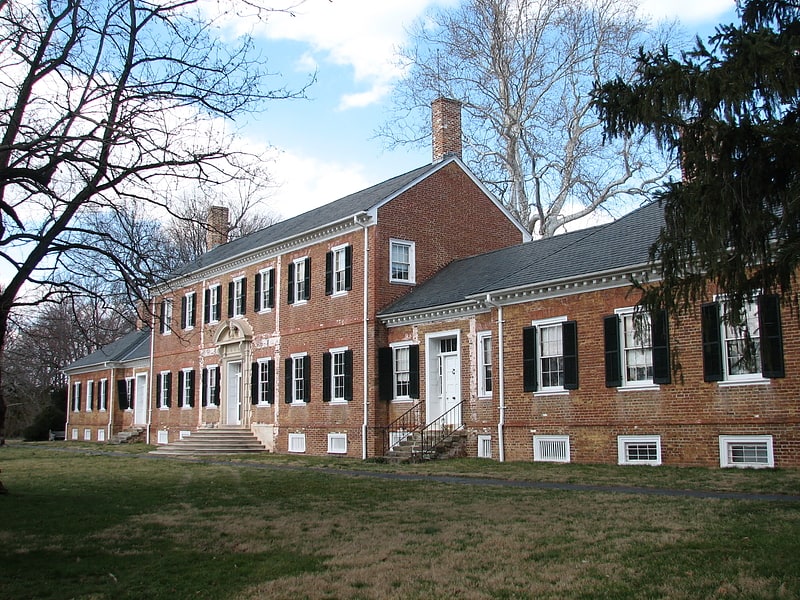
Historical place in Stafford County, Virginia. Chatham Manor is a Georgian-style mansion home completed in 1771 by farmer and statesman William Fitzhugh, after about three years of construction, on the Rappahannock River in Stafford County, Virginia, opposite Fredericksburg. It was for more than a century the center of a large, thriving plantation, and the only private residence in the United States to be visited by George Washington, Thomas Jefferson, Abraham Lincoln, and Dwight D. Eisenhower.
Chatham also reflected the new country's racial tensions. In January 1805, Chatham's slaves overpowered and whipped their overseer and assistants in a minor slave rebellion. An armed posse of white men quickly gathered. They killed one slave in the attack, and two more died trying to escape capture. Two other slaves were deported, likely to the Caribbean or Louisiana, and Fitzhugh soon sold the property.
Five decades later, in 1857, owner Hannah Jones Coalter, died and attempted to manumit her 93 slaves after making provision both for her daughter and the slaves. Her relatives sued, claiming that after the Dred Scott decision, slaves were legally incapable of choosing whether to remain enslaved or receive their freedom and enough money to establish themselves in another state. While local judges thought the executors should free the slaves per Hannah's intent, a divided Virginia Supreme Court disagreed. Thus, the executors sold Chatham with its slaves to J. Horace Lacy, although soon one slave was allowed to travel to raise money to buy freedom for herself and her small family, and succeeded.
During the American Civil War, the Lacys abandoned Chatham. Its strategic site overlooking Fredericksburg briefly served as Union headquarters, and later as the major Union hospital during battles for control of the strategic Virginia city and Spotsylvania County en route to the Confederate capital. Due to wartime use and disuse, Chatham fell into great disrepair. The Lacys ultimately sold Chatham to pay taxes in 1872. Saved from total destruction as the 20th century began by a series of wealthy American owners, Chatham was refurbished and became a showpiece. The estate was willed to the National Park Service in 1975 and now serves as the headquarters for the Fredericksburg and Spotsylvania National Military Park.[1]
Address: 120 Chatham Ln, Fredericksburg
Fredericksburg National Cemetery
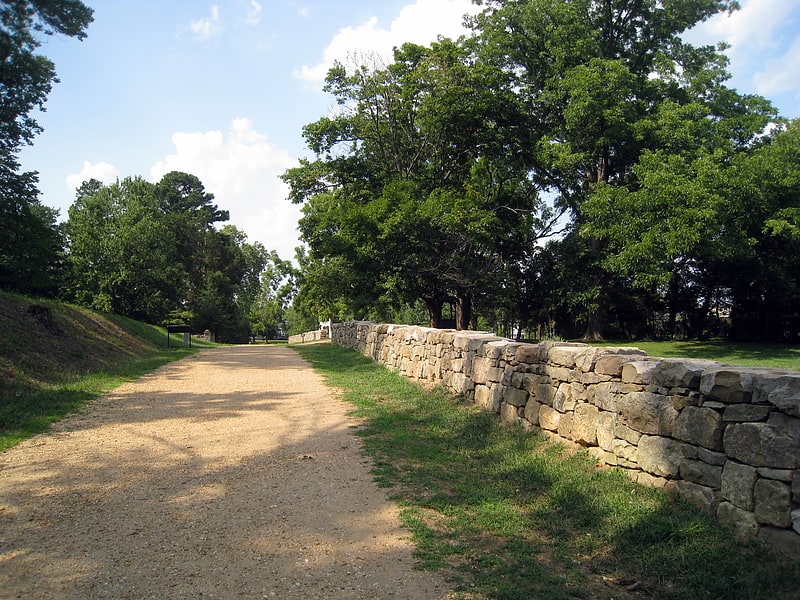
National park in Virginia. Fredericksburg and Spotsylvania National Military Park is a unit of the National Park Service in Fredericksburg, Virginia, and elsewhere in Spotsylvania County, commemorating four major battles in the American Civil War: Fredericksburg, Chancellorsville, The Wilderness, and Spotsylvania.[2]
Address: 1013 Lafayette Blvd, Fredericksburg
Kenmore
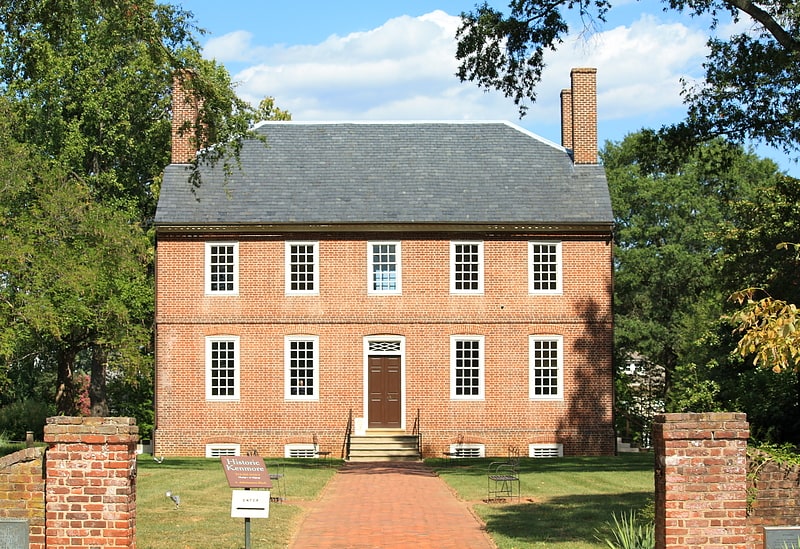
Museum in Fredericksburg, Virginia. Kenmore, also known as Kenmore Plantation, is a plantation house at 1201 Washington Avenue in Fredericksburg, Virginia. Built in the 1770s, it was the home of Fielding and Betty Washington Lewis and is the only surviving structure from the 1,300-acre Kenmore plantation.
The house is architecturally notable for the remarkable decorative plaster work on the ceilings of many rooms on the first floor. In 1970 the property was declared a National Historic Landmark.
Kenmore is owned and operated as a house museum by The George Washington Foundation (formerly George Washington's Fredericksburg Foundation), and is open daily for guided tours. The Foundation also owns nearby Ferry Farm, where George Washington lived as a child.[3]
Rising Sun Tavern

Building in Fredericksburg, Virginia. The Rising Sun Tavern is a historic building in Fredericksburg, Virginia. It was built in about 1760 as a home by Charles Washington, youngest brother of George Washington, and became a tavern in 1792.[4]
Address: 1304 Caroline St, Fredericksburg
Mary Ball Washington House

Museum in Fredericksburg, Virginia. The Mary Washington House, at 1200 Charles Street in Fredericksburg, Virginia, is the house in which George Washington's mother, Mary Ball Washington, resided towards the end of her life. It is now operated as an 18th-century period historic house museum, one of several museums in Fredericksburg operated by Washington Heritage Museums. Today it displays 18th-century furniture, and her personal possessions, such as her "best dressing glass”.[5]
Address: 1200 Charles St, Fredericksburg
Chapel Point State Park

County park in Charles County, Maryland. Chapel Point State Park is an undeveloped public recreation area located on the Port Tobacco River, a tributary of the Potomac, in Charles County, Maryland. The state park offers fishing and hunting. Adjacent to the park, St. Ignatius Church and cemetery, the oldest continuous Roman Catholic parish in the United States, offers a scenic river view.[6]
Gari Melchers Home and Studio
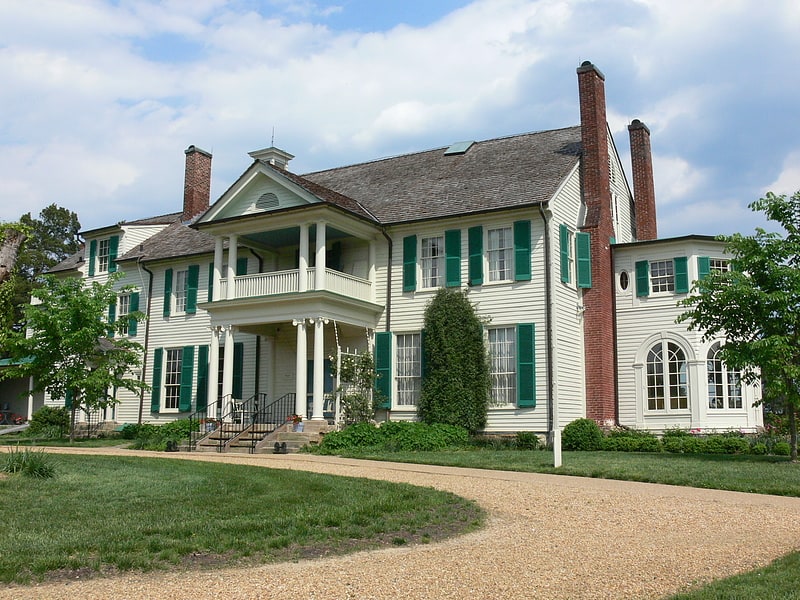
Museum in the Falmouth, Virginia. Gari Melchers Home and Studio, also known as Belmont, is a National Historic Landmark and historic house museum at 224 Washington Street in Falmouth, Virginia. This much-altered 18th-century house was the home and studio of the popular American artist Gari Melchers from 1916 until his death. It was given to the state of Virginia by his widow, and is now administered by the University of Mary Washington. It was declared a National Historic Landmark in 1965, commemorating Melchers' influential role in bringing American art to European attention.[7]
Address: 224 Washington St, Fredericksburg
Ferry Farm
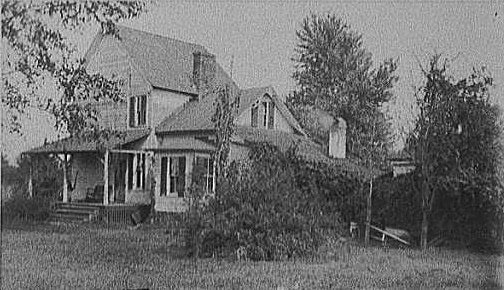
Building in Stafford County, Virginia. Ferry Farm is the name of the farm and home at which George Washington spent much of his childhood. The site is located in Stafford County, Virginia, along the northern bank of the Rappahannock River, across from the city of Fredericksburg. In July 2008, archaeologists announced that they had found remains of the boyhood home, which had suffered a fire during 1740, including artifacts such as pieces of a cream-colored tea set probably belonging to George's mother, Mary Ball Washington. In 2015, the George Washington Foundation began constructing a replica of Washington's boyhood home on the site of the original building. The replica house was completed in 2018 and is open to the public.[8]
James Monroe Museum and Memorial Library
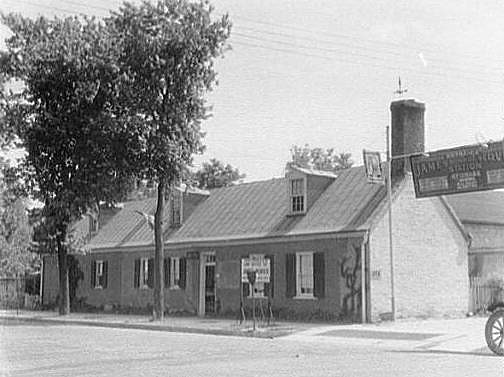
Museum in Fredericksburg, Virginia. The James Monroe Museum and Memorial Library is a historic museum at 908 Charles Street in Fredericksburg, Virginia. It is located on the site of the James Monroe Law Office, used by future United States President James Monroe from 1786 to 1789. It was declared a National Historic Landmark in 1966. It is now owned by the Commonwealth of Virginia and operated by the University of Mary Washington. The museum features original objects and memorabilia related to James Monroe, and includes items relating to other members of his family, including dresses worn by First Lady Elizabeth Monroe.[9]
Address: 908 Charles St, Fredericksburg
National Bank Museum
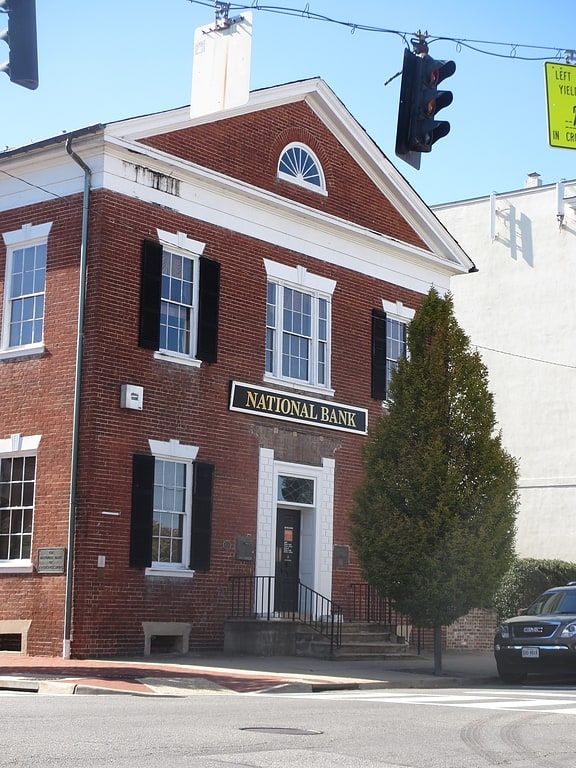
Building in Fredericksburg, Virginia. Farmers Bank of Fredericksburg, also known as The National Bank of Fredericksburg, is a historic bank building located at Fredericksburg, Virginia. It was built in 1819–20, and is a 2+1⁄2-story, rectangular red-brick building in the Federal style. It features a slate-covered front gable roof with a lunette window in the front pediment, wide cornice, three pairs of brick chimneys, and engaged pedestal columns with full entablature on the front facade. The front portion of the main floor had been used as a banking house since its construction, while the rooms at the rear and those on the second floor housed the bank's cashiers and their families from 1820 to 1920. In 2016, after completing renovations to the inside of the building, the building was converted into a restaurant while keeping the existing bank vault as a private dining area.
It was listed on the National Register of Historic Places in 1983.[10]
Historic Moncure Conway House
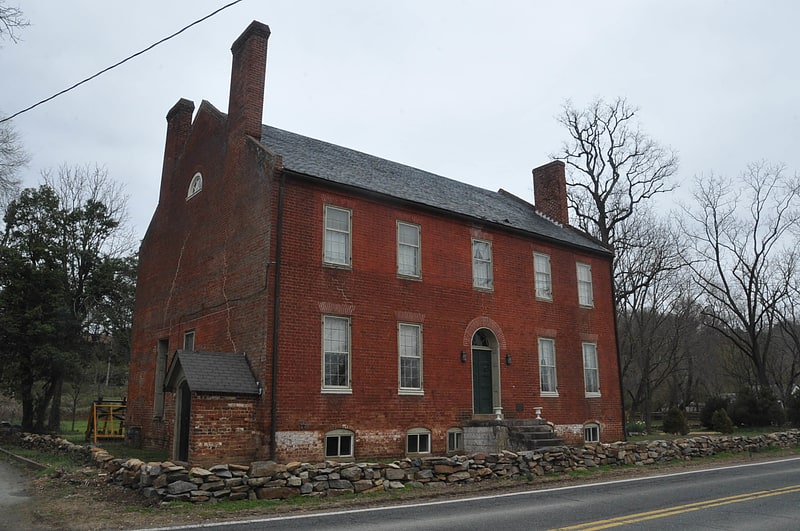
Conway House, also known as the Moncure Daniel Conway House, is a historic home located at Falmouth, Stafford County, Virginia. It was the home of author, clergyman, and abolitionist Moncure D. Conway and used as a Union hospital during the American Civil War.
The home was built in 1807, and is a large two-story, five bay, "L"-shaped Federal style brick dwelling. It has a full basement, side-gable slate roof, brick interior-end chimneys.
It was listed on the National Register of Historic Places in 2004. In 2005, the National Park Service formally recognized the home as a National Underground Railroad Network to Freedom Historical Site. It is located in the Falmouth Historic District.[11]